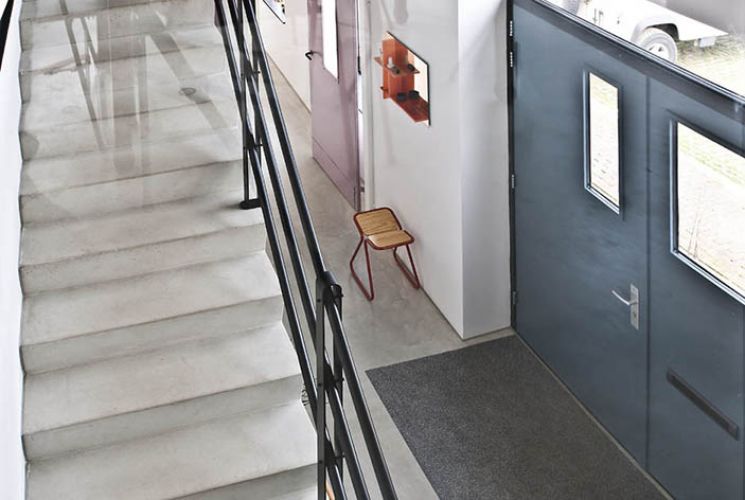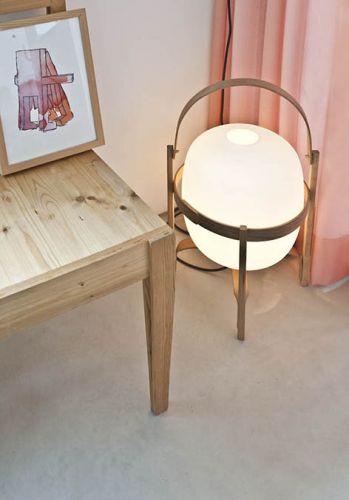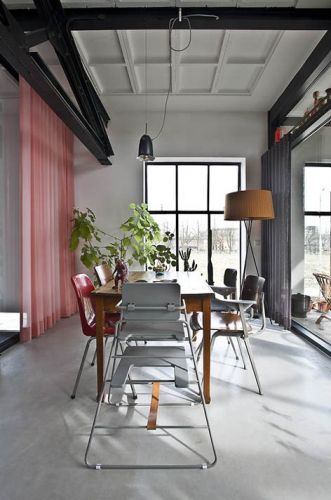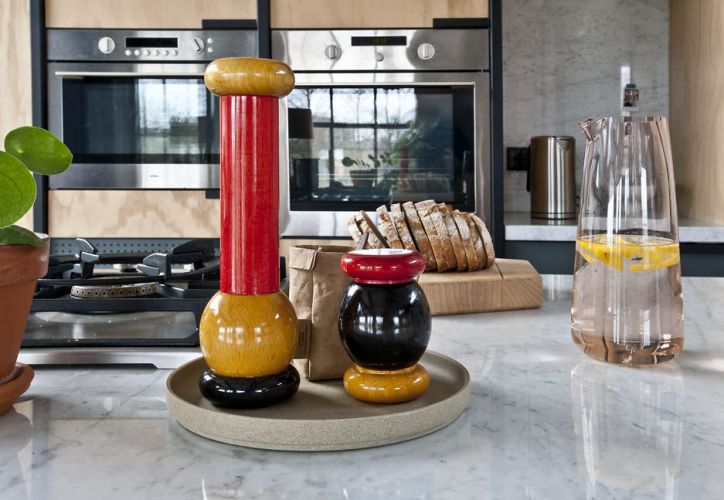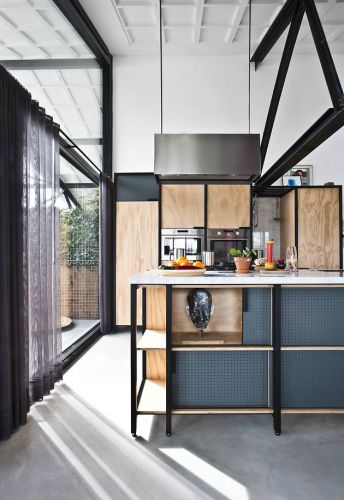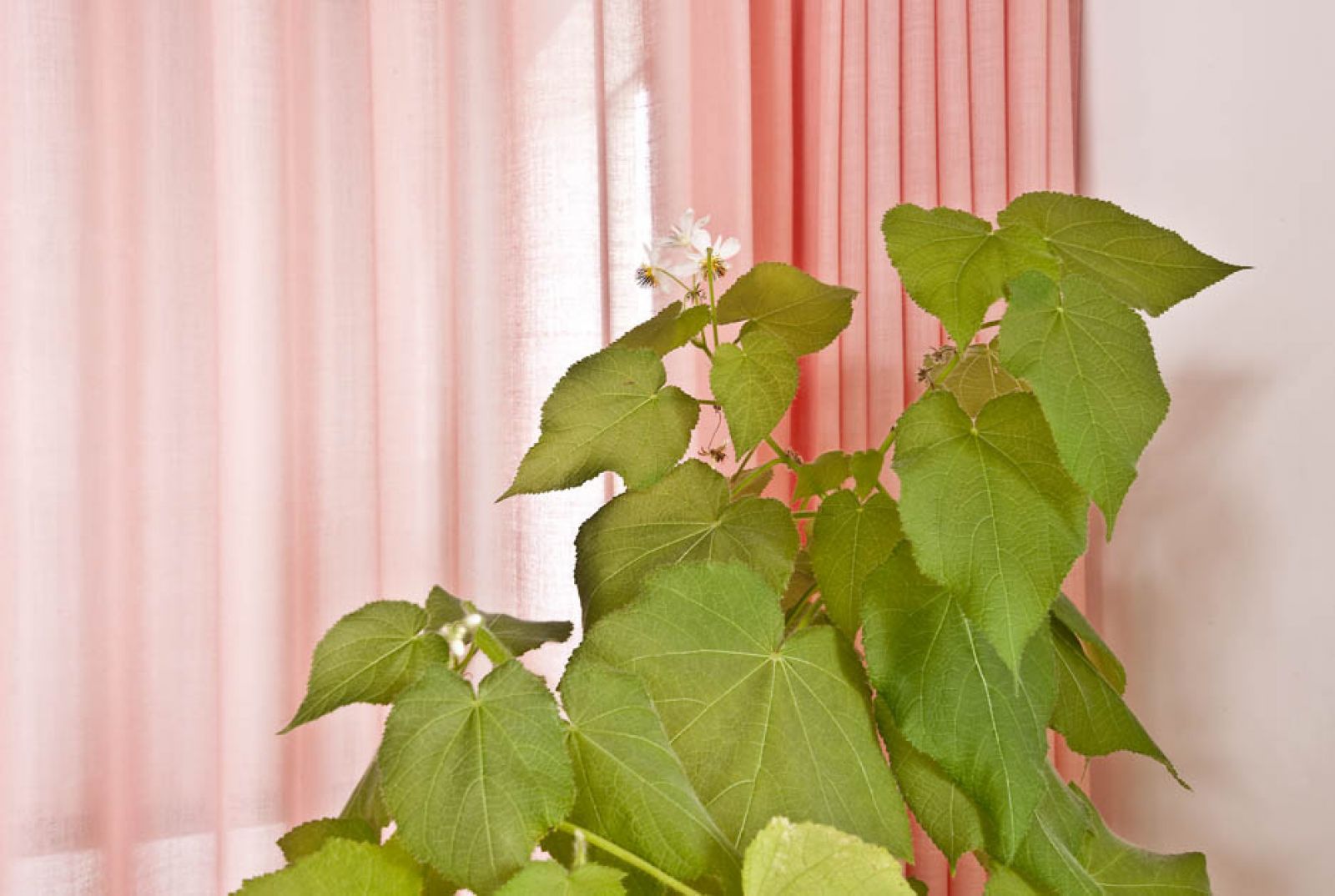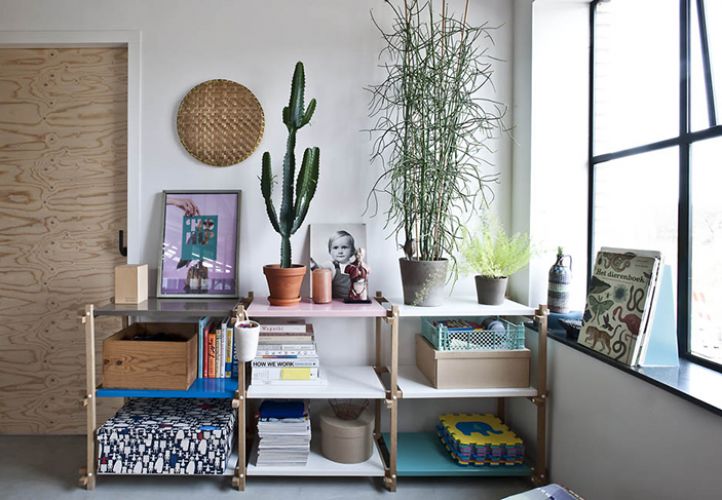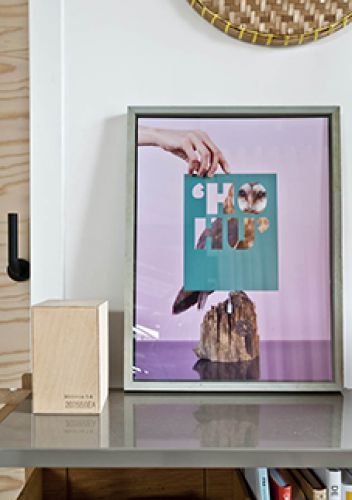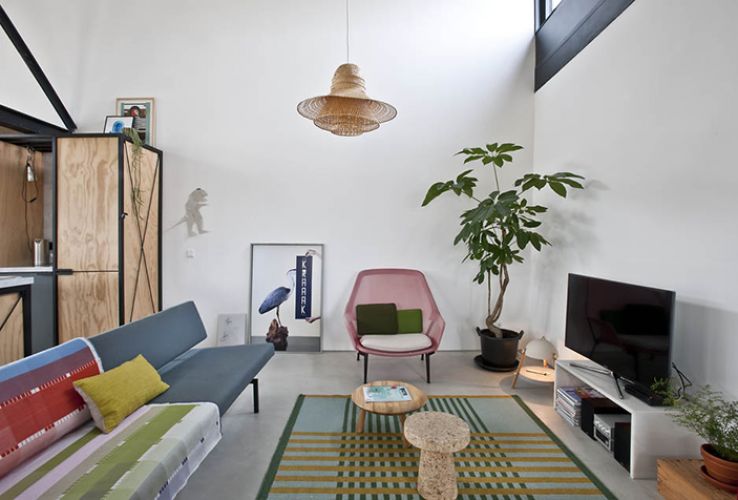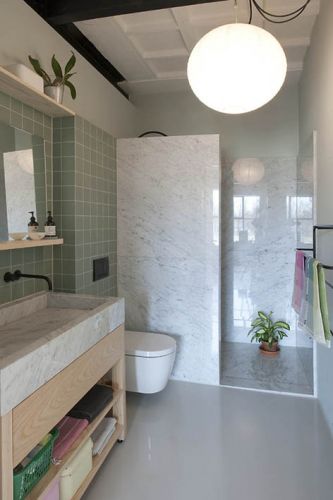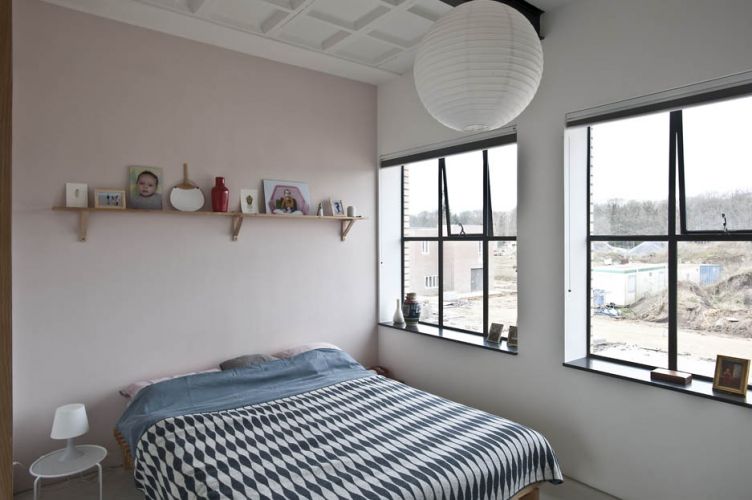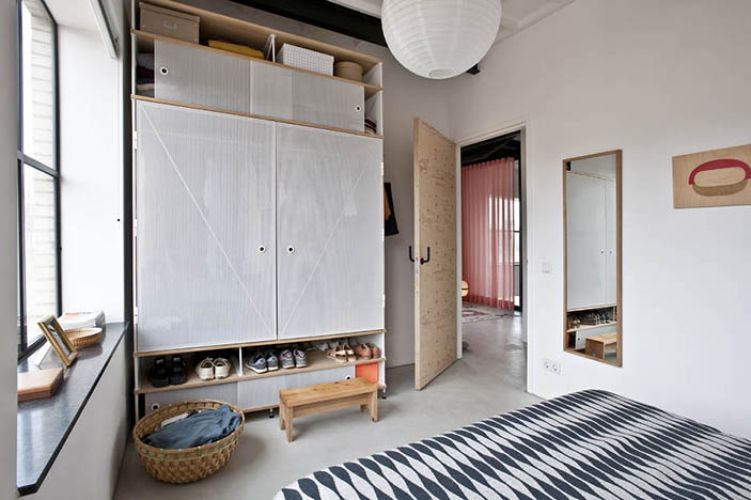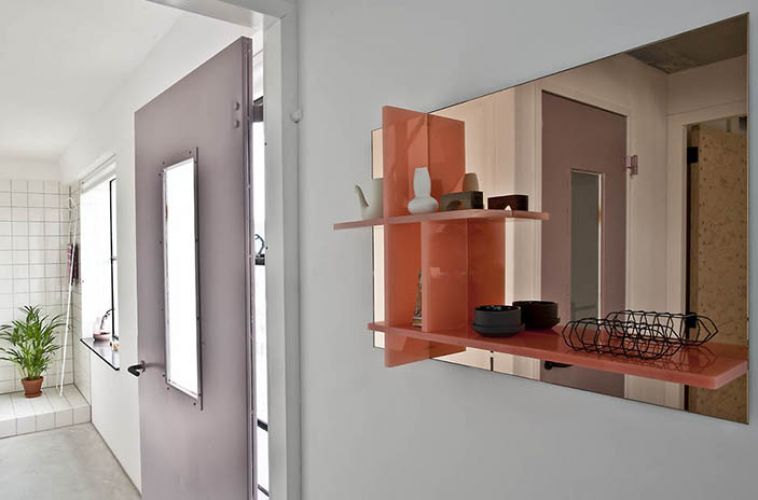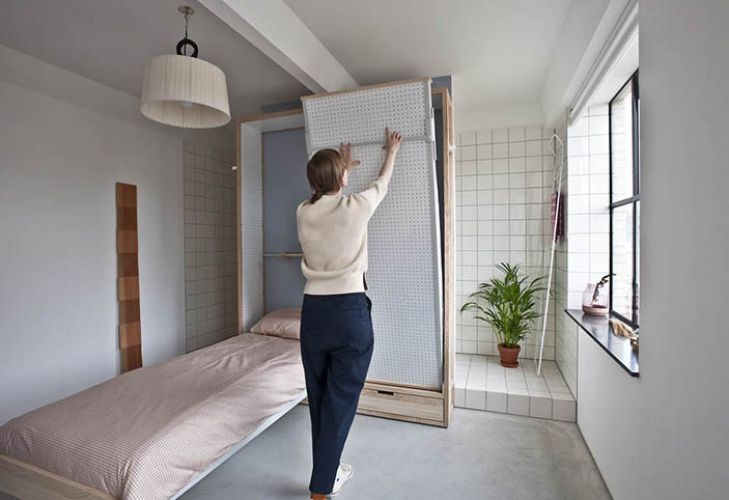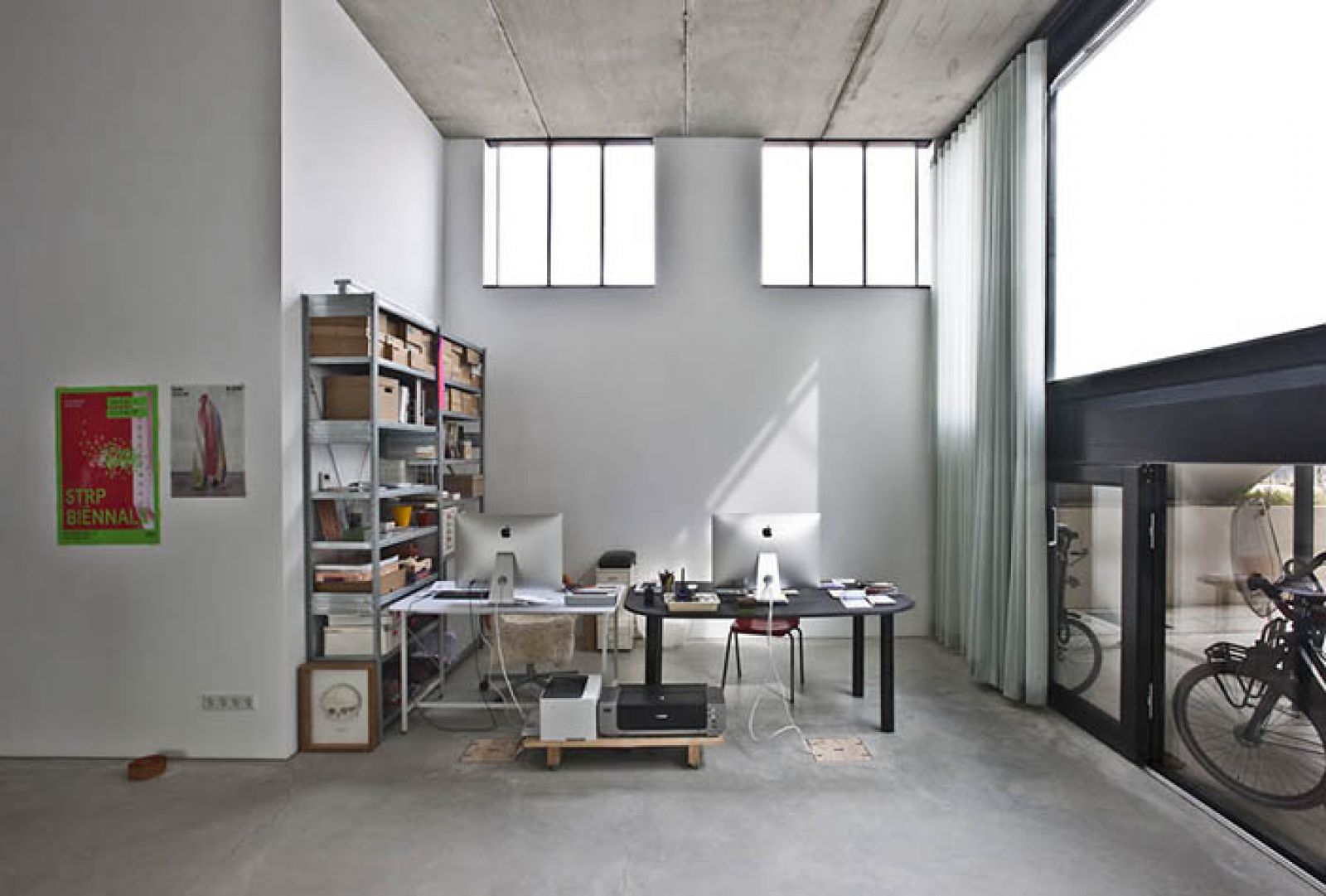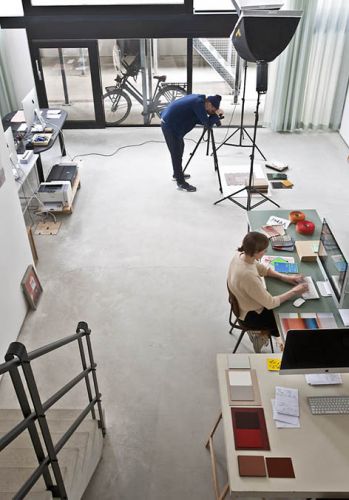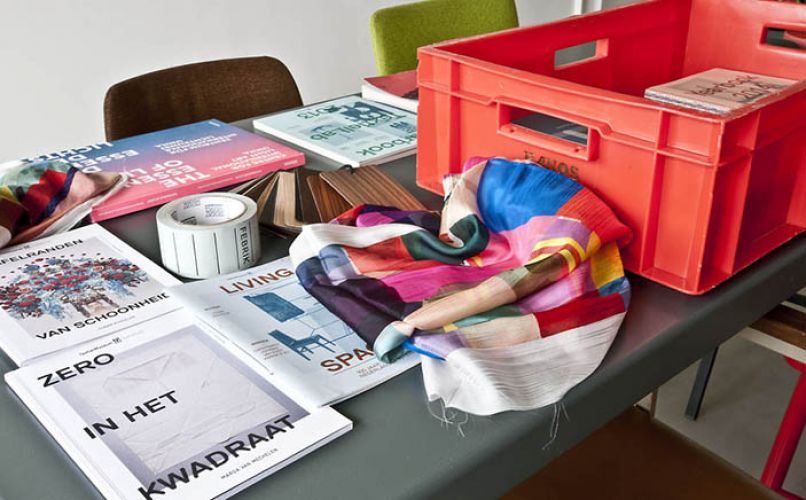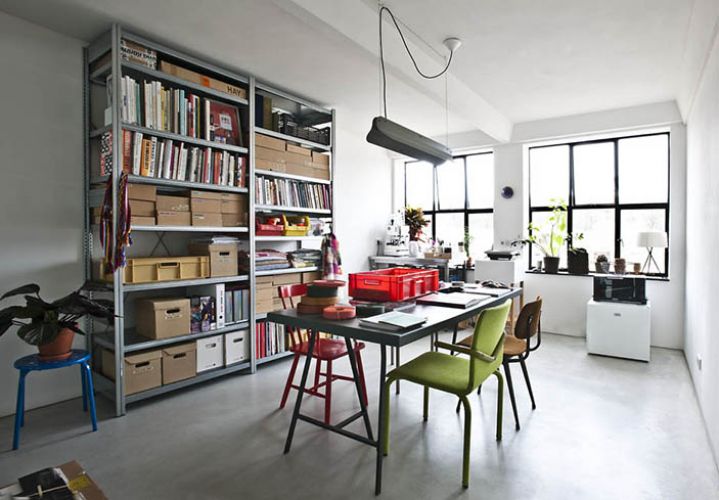The renovation of the RAG building, formerly a pump station at the Philips factory, was the first project to be taken on by Piet Hein Eek and Iggy Dekkers’ architect firm. They followed the logic that they found in the original architecture, assigning new roles to the qualities of the old industrial building. This fits perfectly with the approach we are used to seeing from Piet Hein Eek: working with the existing materials, techniques, craftsmanship and potential, but then with a willingness to create new forms. Eek and Dekker split the huge building in two and built an inner street between the separate parts, allowing the sun to shine into the heart of the building. Large sliding doors open from the kitchen and living room onto the veranda under the covered street, with the concrete cassette ceiling extending on into the interior. Daniera and Christoph drew on the building’s industrial character when designing the interior. In the kitchen and living room, the character of the steel trusses is accentuated even further by the black steel frame of the cooking island and by the stairwell. The kitchen forms a highly graphic image: a frame of steel profiles containing sheets of underlayment and perforated hardboard. The rigid lines are counterbalanced by the grey-blue colours and the subdued materials used, the lively white marble kitchen countertop and the warm texture of the wooden panels in the doors.
Raw Color
Daniera ter Haar and Christoph Brach have been working together since 2007. Raw Color achieved international recognition for its innovative visual language in photography and graphic design that displays a feeling for and understanding of the use of colour and the authentic properties of materials. Not surprisingly, their modus operandi is also evident in the interior design of their new home.
COLOUR AND NATURE
Although most of the clichés of interior design TV shows don’t apply here, for Daniera and Christoph the kitchen does form ‘the heart of the home’. And it is the most eye-catching elements of the kitchen and the stairwell that determine the overall interior design. Daniera and Christoph were careful to counterbalance the hardness of the concrete and steel by adding texture and colour to the interior. For example, the underlayment in the kitchen was also used in the doors in the living and sleeping quarters. The living room boasts a bric-a-brac of prototypes from their own body of work, the work of other designers in Eindhoven and the brands for whom Raw Color works. The pink, transparent curtains in particular give the space a hint of lightness and refinement. These textile panels are made of thin wool and were dyed using natural pigments. They owe their panel shape to the special hanging system designed by Raw Color. The sitting room is furnished with a simple but elegant couch – a copy of Mart Visser’s famous BR02 sofa –upholstered in grey-blue wool and a marvellous pink Slow Chair by Ronan Erwan Bouroullec. The most striking feature is the rug with its geometrical pattern of perpendicular lines in green and ochre on a light green background. Subdued colours set the tone: light green, ochre, petrol and pink that alternate with the natural accents of wood, cane and cork.
RHYTHMIC GEOMETRY
It is the sense of clarity that provides rhythm and variation to the interior. A photo of Daniera as a young girl stands a little forlornly on a cabinet. While most homes have a corner of some room or other where stuff gets piled up, here everything is neat and tidy. The modular shelving by Hay provides the stacks of magazines, games and books with a geometrical framework. While the bedroom has a rather neutral feel, the bathroom presents a richer and refined image thanks to the shiny white marble surfaces and the matt beige emulsion of the walls. Wouter Scheublin.
MEZZANINE
‘The trick of our house is in its use of height,’ Daniera explains. In the hall, the lines of the black stair railing emphasise the sense of upward motion. The hall is situated at the intersection between the entrance, the living and sleeping quarters upstairs and the studio below. ‘We wanted to create a good working space. And this was what had the greatest influence on the design of the house. By excavating an old machine room we were able to add an extra half-floor of space to the studio.’ Daniera and Christoph built a small conference room on the mezzanine, complete with conference table, books, archive and a kitchenette. A set of stairs leads to the photo studio and the computer room below. The studio benefits greatly from the additional light that floods in through the extra-large windows. ‘This applies especially to the large window installed at our request by Eek and Dekkers in the studio.’ This window is a copy of the windows on.
This production was published in WOTH No3. This issue is still available in english via Bruil & van der Staaij. Or get a subscription here!
Dutch versions of WOTH can be ordered in our shop and an NL subscription is available here.
